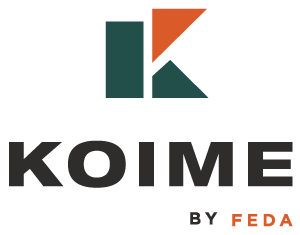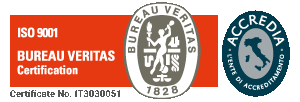What is meant by ergonomics?
Interaction, that is the central term of the topic, that interdependence between humans and the work environment, the object of study of this multidisciplinary science.
Physical ergonomics optimizes tools, technologies and systems by applying them to design to improve
the well-being of those who use them. It also assesses the positions assumed by the body during actions
repetitive, to eliminate, or at least reduce, psychophysical stress and risk
injuries.
How is ergonomics regulated in the workplace by the D.lgs. 81/08 ?
The term ergonomics is now widespread and applied to a variety of areas and contexts, but wanting to focus on work and therefore on the places related to it and the equipment that is used during the performance of tasks, we can certainly take into consideration the Consolidated Act On Health and Safety at Work (Legislative Decree 81/08).
There are many references to this topic in the above-mentioned collection of regulations, ranging from work environments, machinery, tools, personal protective equipment, and then being applied to specific areas such as video display work, manual handling of loads, working at heights, etc.
What are the obligations of the Employer on the subject of ergonomics?
The obligation on the part of the Employer to “respect ergonomic principles in the organization of work, in the design of workplaces, in the choice of equipment and in the definition of work and production methods, in particular in order to reduce the health effects of monotonous and repetitive work” is stated in the more generic Article 15 and then taken up several times in the Decree and applied to specific areas (e.g., Art. 111 for work at heights, Art. 174 for work at the video terminal).
European and International Legislation on Ergonomics.
UNI standards intervene, which is the National Unification Body that is in charge of transposing and translating, at the Italian level, the standards of supra-national standardization bodies (ISO International Organization for Standardization and EN developed by the European Committee for Standardization).
The UNI ISO 11226-11228 standards, which are also explicitly cited in Legislative Decree 81/08, establish the limits of Biomechanical Overload in the Manual handling of loads, regarding lifting, carrying, pushing, pulling, frequency as well as evaluating static work postures.
The UNI EN ISO standards on Anthropometry, on the other hand, define techniques for measuring the human body at the product design stage, three-dimensional scanning methodologies, and requirements for templates or dummies for testing functions. The UNI EN standards on Machinery Safety establish principles for designing ergonomic and safe devices, in terms of usability and performance.
The UNI EN ISO 9241 standard on Human-System Interaction, defines guidelines on the accessibility of information technology equipment and services.
How do you improve the ergonomics of a product at the production and design level?
If a tool is difficult to use, uncomfortable, or unsafe, it is considered unergonomic.
A product is ergonomic when it safeguards the health and well-being of the user and enhances user satisfaction.
To achieve ergonomic suitability we rely on the kinetosphere, the science that measures human prehensility and ability to move in space, ideally represented as spherical.
In manufacturing, a decision may be made to implement a reactive ergonomics plan, in case a product needs to be corrected, or preventive ergonomics in case, on the other hand, problems need to be identified in advance and then designed.
Ergonomists and/or specialized companies can improve ergonomic suitability by evaluating products and posture during use, as well as officially certifying their level of ergonomics.
How is ergonomic risk assessed in the DVR?
It is important to know preliminarily the work activity of each task through appropriate analyses such as: activity (user’s interaction with the system); flow (temporal sequence of system events); decision (results consequent to user’s decisions); task (list of operations performed by the user and the goals to be achieved).
Depending on the task under consideration, specific assessments will be carried out through also preferred methods such as the OCRA system, recommended by ISO 11228-3 for estimating the risk of biomechanical overload of the upper limbs from repetitive movements.
To support the survey activity there are several OCRA checklists, developed on computer media by the EPM (Ergonomics of Posture and Movement) Research Unit, ranging from the more in-depth one applied to classic industry, to the simpler one indicated for small realities having less defined and less tight cycles.
How do you evaluate ergonomics in production, design, and certification?
In order to assess the quality of ergonomics, ergonomists, must take into account the characteristics of human beings and their demands, the environment in which they move, the type of work they do, and the tools they use.
The scientific disciplines on which ergonomics is based are many and varied in nature: in fact, the aim is to make tools compatible with human abilities.
To make an ergonomic product, therefore, it is necessary to apply anthropometry, biomechanics, physiology, psychology, kinesiology, physics, engineering, and, of course, industrial design.
How do you certify an ergonomic product and who to contact?
In order to certify a product or process, it is necessary to apply to the appropriate ergonomic certification bodies .
The certification process on ergonomics involves a preliminary analysis, followed by tests and verifications in the context of use, such as biomedical, usability, and user experience tests, including with the help of 3D simulation tools.
The certification body, after requesting any adjustments, develops a report and can proceed with the issuance of the certificate.
Ergocert, is the first internationally Accredited Body for the Certification of Ergonomic Characteristics of Professional and Consumer Products, Processes and Services.
What products can be covered by ergonomic certification?
TheInternational Ergonomics Association, with more than 42 member associations, is the association that promotes the application of ergonomics to more areas in order to improve the quality of life.
Numerous consumer products (e.g., mattresses, pillows, irons, etc.), professional equipment and products (e.g., seating, industrial laundry equipment, openers), work environments (e.g., video screens), processes (e.g., human centered design, approach on the use of digital systems) can be certified on safety and comfort.



